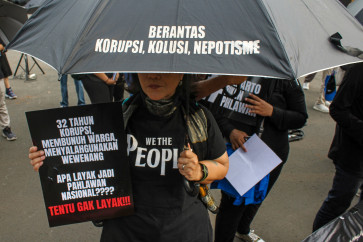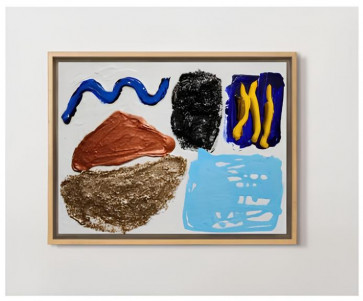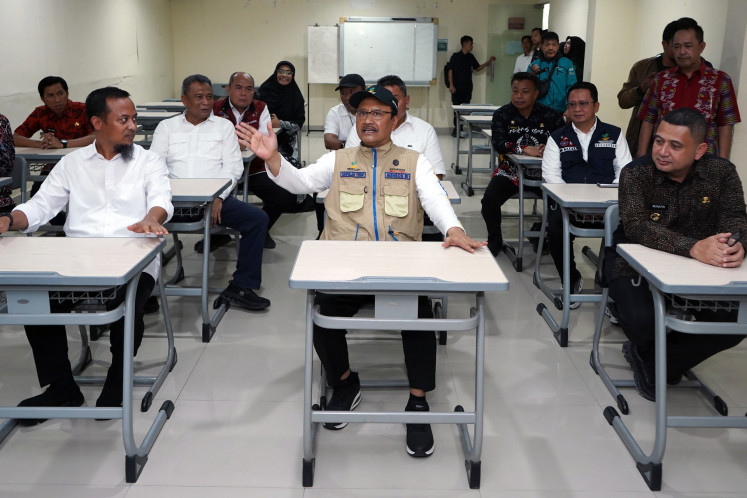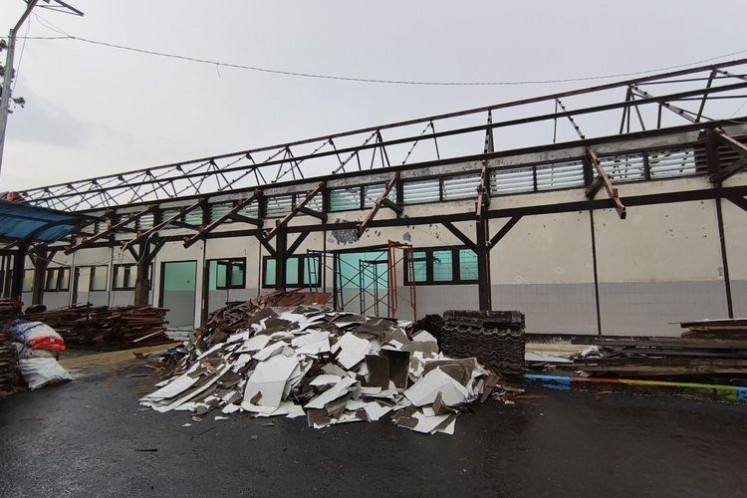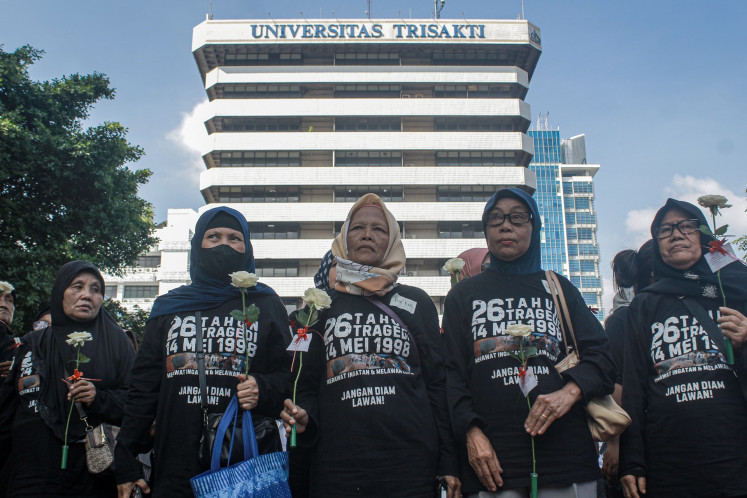Music royalty provisions strike deaf tone among retailers
A new government regulation seems to have the effect of spooking retail operators out of their obligation to pay for licensed music at a time when brick-and-mortar establishments are struggling to draw traffic due to the pandemic.
Change text size
Gift Premium Articles
to Anyone

D
o:p>Do you enjoy being serenaded by a slow saxophone riff as you browse through your favorite bookshop? Have you felt the adrenaline rush of the fast-paced koplo medley during a sale at your choice of retail store? Do you find yourself humming along to top-40 hits while shopping for groceries?
Everywhere we go, in-store music is used to add nuance and complete the retail experience. Many times, we don’t even realize it’s there. But what if these small pleasures that we take for granted suddenly disappeared?
A new government regulation seems to have the unmitigated effect of reminding retail operators of their responsibility to pay for licensed music, at a time when brick-and-mortar establishments are struggling to draw traffic due to the pandemic.
Issued on March 30, Government Regulation No. 56/2021 completes a set of provisions required for operators of commercial public spaces to fulfil their responsibility to pay music royalties through the National Collective Management Agency (LMKN), in accordance with the 2014 Patents Law.
Article 3, Paragraph 1 of the regulation reinforces the responsibility of individuals who make commercial use of music as a public service to pay “royalties to the creator, patent holder and/or holders of any related rights through the LMKN”.
Businesses subject to royalty payments include cafés, restaurants, pubs, bars, bistros and nightclubs; shops, karaoke venues, cinemas and recreation centers as well as banks, offices and hotels. Certain public events and modes of transportation also have to pay to play licensed music.
Royalties are charged on an annual basis with a variety of going rates, depending on the size and type of business.
Cafés and restaurants, for example, must pay Rp 60,000 (US$4.10) annually for every seat, while pubs are charged based on the size of the venue at a rate of Rp 180,000 to Rp 250,000 per square meter.
Movie theaters are charged per screen, while the cost for modes of transportation is based on the number of passengers and the duration of music played over a journey.
Read also: Musicians push for copyright protection on digital platforms
The new regulation was met with both cheers and dread, depending on who is asked.
Roy Mandey, head of retail association APRINDO, said the regulation was issued at the worst possible time for retail businesses. Shops might even opt to forego licensed songs altogether to alleviate the financial burden brought about by the pandemic, he insisted.
“We have a choice not to play any songs. And even if we do play music, it would have to be ones without copyright,” he told The Jakarta Post one recent Thursday.
He lamented that APRINDO, whose members include popular retail chains such as Transmart, ACE Hardware and Indomaret, had very little say in the drafting of the regulation.
Roy claims that discussions with the LMKN about rates and payment mechanisms had been inconclusive at the time the regulation was issued.
“Playing music requires electricity, sound systems and maintenance; we should talk about [royalties] so they don’t just burden retailers and benefit music creators,” he said.
LMKN commissioner Marulam Hutauruk said the royalty rates prescribed in the country were still very low, given the many considerations taken to ensure that business owners were not burdened.
“These rates are so much lower than those in other countries that any failure [to fulfil one’s payment obligation] is surely a violation of the law,” he said on April 13, as quoted by Kompas.com.
“[The Creative Economy Agency] has also been disseminating information on royalty payment obligations for quite some time, especially when it comes to regulations. So any member of the business community should know this.”
Read also: Draft legislation on music sparks criticism from musicians
On the other side of the debate, musicians heralded the new government regulation as a glimmer of hope in their own pandemic struggles.
Baskara Putra, who sings and writes music under the moniker Hindia, said his heart broke when he heard comments painting music strictly as a commodity. “It’s as if music is only created as part of a promotional drive to get branded deals,” he told the Post earlier this month.
For what it’s worth, Baskara said, the new regulation was good news for musicians who were not aware of their rights.
“As a musician, it’s very difficult to access knowledge about our own artistic rights and understand the ways we can use our music as a consistent source of income – especially if you are a newcomer,” he said.
“It took me years until I knew who to talk to about these things and how the system works.”
Among the other prominent points introduced in the new regulation is the establishment of a Song and Music Information System (SILM) to help the LMKN identify and distribute royalties to the rightful creators.
The retail and music industries have been hit hard by the pandemic, with physical retail store closures costing hundreds of thousands of jobs and musicians losing out on opportunities to earn from concerts and live events.
In 2019, live and background music collections – which is the intersection of the two industries – represented around 28 percent of global collections by collective management associations, or approximately US$3.367 billion, according to the 2020 International Confederation of Authors and Composers (CISAC) Global Collections Report.
The report also predicted that royalties from these sources would see a 60-80 percent decline due to the pandemic.
Read also: Struggling music industry gets new lease on life
Information on the total amount of live and background music royalties collected remains scarce in Indonesia, but according to some estimates, the LMKN collected a total of Rp 130.4 billion in royalties between 2015 and 2018, while distributing around Rp 91 billion to patent holders.
The Indonesian Singer, Songwriter and Music Artist Collective Management (LMK PAPPRI) organization, for instance, distributed royalties amounting to Rp 1.69 billion in 2019, generated from the use of musical works on television and at karaoke parlors, restaurants, malls, hotels and other entertainment centers.
Hilman Fathoni, copyright expert and the Indonesian representative for the Global Creative Commons Network, said that, while the regulation was a strategic way to guarantee the welfare of Indonesian musicians, it also implied more work for the LMKN as a distributor of royalties.
He said the LMKN should be proactive in informing musicians of the regulation and use all its channels to ensure equal involvement from musicians of all social classes, not just those backed by wealthy investors.
“Just like any other citizen in this country, musicians face the risk of unequal wealth distribution created by state capitalism or corporation capitalism. The solution is solidarity and alternative development to help each other avoid the risk of a wealth gap,” he told the Post last month.
Hilman added that there was more to the welfare of musicians than royalties, and that special care should be taken not to treat music as a mere commodity.
“The narrative coming from this regulation should not be about monetization and copyright law enforcement as the only way to appreciate music,” he said.
Hafez Gumay, advocacy manager for the Indonesian Art Coalition, also asserted that royalties were the right of every musician. “Never think that the obligation to play music royalty manifests from musicians’ greed. Without the music they create, our life would be quiet,” he said.
To anticipate this, many local musicians, mostly from the fringe or sidestream, have already opened up their music catalogues to be free to use in public places. The Creative Commons (CC) license, an alternative to the conventional copyright, allows more flexible use of music, they say.
Woto “Wok the Rock” Wibowo, founder of nonprofit music label Yes No Wave Music, has used CC to protect his artists since the founding of the label in 2007. Their artists range from mainstream-friendly pop outfits, such as Frau and Bangkutaman, to dance floor ghouls, such as Gabber Modus Operandi and Barakatak. CC works perfectly for the label and its artists, because it serves as a distribution platform that highlights sharing culture.
“CC supports the artwork development within the process of sharing, using, remixing and recomposing for noncommercial use,” he told the Post recently.
“It is a democratic model for work licensing that gives the artists freedom to determine how they want their work to be accessed by the public.”


